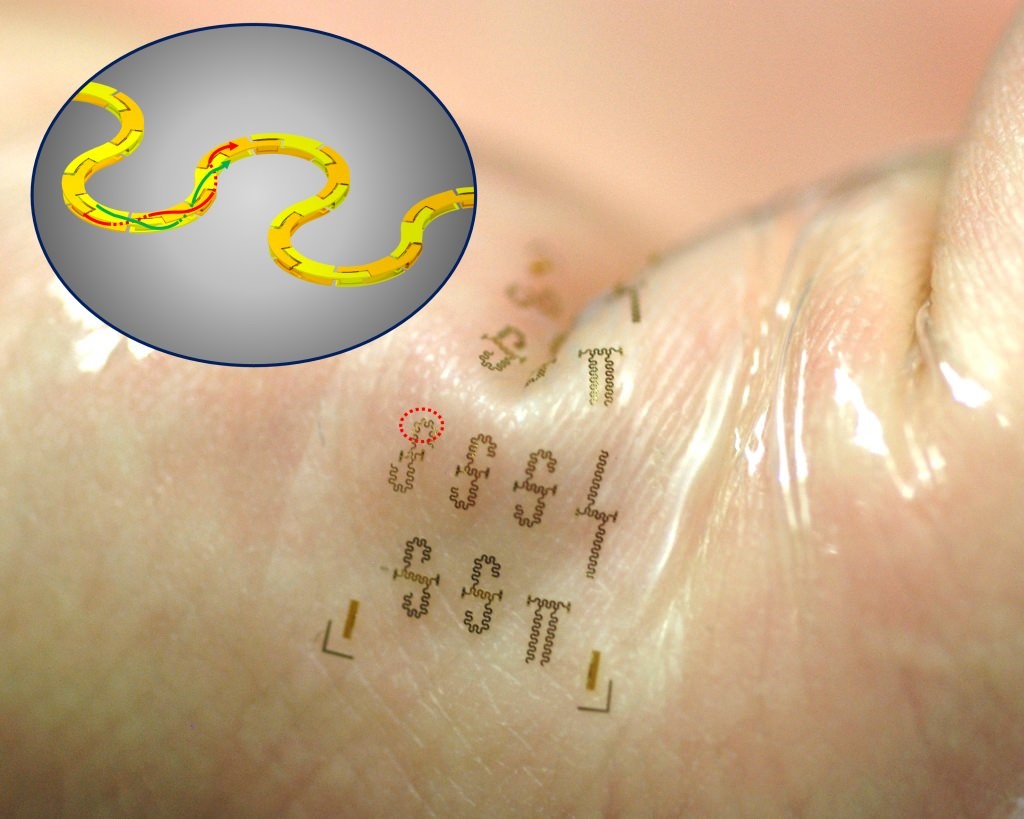
Modern wearable technology seeks to interweave electronics into the everyday life in a positively impactful way. From fitness tracking watches to personal panic buttons that set off alarms, the market for wearable electronics is expanding and advancing rapidly.
A team of engineers at the University of Wisconsin-Madison led by electrical and computer engineering professor Zhenqiang “Jack” Ma has created the world’s fastest stretchable, wearable integrated circuits, an advancement that is small enough to be highly effective in epidermal electronic systems but large enough to drive the Internet of Things.
“This is a platform. This opens the door to lots of new capabilities,” says Ma, whose work was supported by the Air Force Office of Scientific Research. The advance acts as a platform for manufacturers seeking to expand the capabilities and applications of wearable electronics—including those with biomedical applications.
The circuit technology takes advantage of next generation 5G wireless broadband technologies, using frequencies in the .3 gigahertz to 300 gigahertz range, and falling directly in the wide range radio frequency of 5G networks.
Besides running on a faster data connection network, the unique structure of the stretchable integrated circuits creates a sophisticatedly powerful circuit. Inspired by twisted- pair telephone cables, it contains two ultra-tiny intertwining power transmission lines in repeating S-curves.
Fabricated into two layers of interlocking metal blocks like a 3-D puzzle, the segments give the transmission line the ability to stretch without affecting their performance. The structure also helps shield the lines from outside interference and, at the same time, confines the electromagnetic waves flowing through them, virtually eliminating current loss.
In addition—and unlike other stretchable transmission lines whose widths can approach 640 micrometers (or .64 millimeters)—the researcher’s new stretchable integrated circuits are just 25 micrometers (or .025 millimeters) thick, expanding their applications in wearable electronics.
In mobile communications, the wide microwave radio frequencies of 5G networks can allow the circuits to accommodate a growing number of cellphone users with notable increases in data speeds and coverage areas.
Similarly, in an intensive care unit, ultra-thin epidermal electronic systems (electronics that adhere to the skin like temporary tattoos) could allow health care staff to monitor patients’ heart, brainwaves, and muscle activity remotely and wirelessly, increasing patient comfort by decreasing the customary tangle of cables and wires.
Companies like Google and Levi’s have even taken the idea of flexible, wireless circuits to the consumer, teaming up to make “smart clothing” that interacts with your devices.
The functionality of wireless, wearable electronics has a growing place in the communications, biomedical, and consumer marketplace.
Sources: Phys.org , CNN , Daily Mail
Advertisement
Learn more about Electronic Products Magazine





